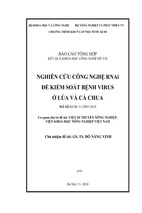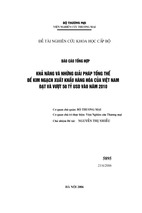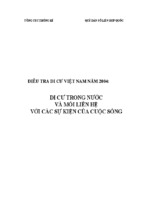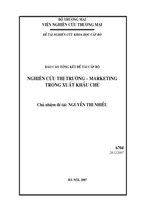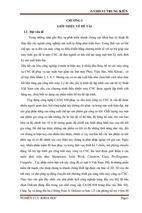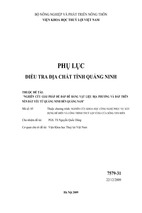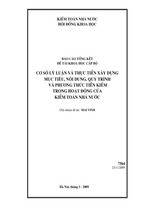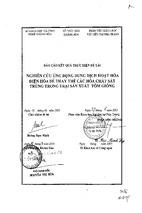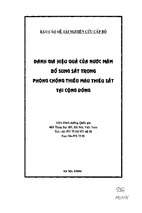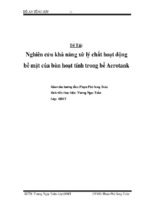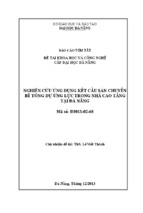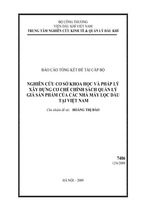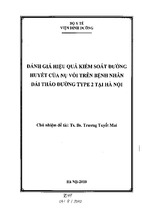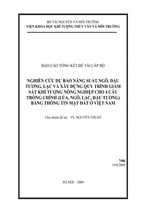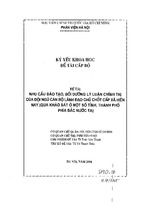THE TOTAL SYNTHESIS OF C1'-AZACYCLOALKYL HEXAHYDROCANNABINOIDS
THE TOTAL SYNTHESIS OF 3-OXAADAMANTYL HEXAHYDROCANNABINOIDS
THE SYNTHESIS OF BICYCLIC 3-ADAMANTYL CANNABINOIDS
A DISSERTATION SUBMITTED TO THE GRADUATE DIVISION OF THE
UNIVERSITY OF HAWAI‘I AT MĀNOA IN PARTIAL FULFILLMENT OF THE
REQUIREMENTS FOR THE DEGREE OF
DOCTOR OF PHILOSOPHY
IN
CHEMISTRY
DECEMBER 2014
By
Thanh Chi Ho
Dissertation Committee:
Marcus A. Tius, Chairperson
Thomas Hemscheidt
Philip Williams
Kristin Kumashiro
Stefan Moisyadi
We certify that we have read this dissertation and that, in our opinion, it is satisfactory in scope
and quality as a dissertation for the degree of Doctor of Philosophy in Chemistry.
DISSERTATION COMMITTEE
_____________________________
Chairperson
_____________________________
_____________________________
_____________________________
_____________________________
ii
ACKNOWLEDGEMENTS
I would like to express sincere gratitude to my advisor, Professor Marcus A. Tius for his valuable
guidance. Instruction of a graduate student from another culture and language does not only
require dedication and knowledge but also enthusiasm, patience, sympathy and love. This is
spoken from my heart.
I would like to thank Professor Lawrence M. Pratt for his recommendation that gave me an
opportunity to study at the University of Hawai‘i at Mānoa.
I also would like to thank all members in Professsor Tius' group in the past and at present for
contributions to my chemistry work. Especially to Dr. Naoyuki Shimada for his initial
instructions when he was a postdoctoral fellow and I was a first year graduate student; to
members working on similar research projects (Dr. Darryl Dixon, Mr. Go Ogawa, and Mr.
Kahoano Wong) for information on their earlier work; and to Dr. Francisco Lopez-Tapia and all
other members in our lab for helpful suggestions on chemistry and for the time we were together.
I would like to thank my committee members: Professor Thomas Hemscheidt, Professor Philip
Williams, Professor Kristin Kumashiro, and Professor Stefan Moisyadi for their time and
wisdom, advice, and help.
I would like to thank Professors in the Department of Chemistry at the University of Hawai‘i at
Mānoa for valuable and enthusiastic instruction in chemistry and help with my studies.
Thanks also for technical support from Mr. Wesley Yoshida, Dr. Walt Niemczura, Dr. Anais
Jolit, Dr. Christine Brotherton-Pleiss for NMR and mass spectra.
I would like to thank my parents, my wife and her family, and my little daughter for their time
and love.
Finally, I would like to thank the Vietnamese Government for the scholarship that supported my
study during the first three years. I would like to thank Professor Marcus A. Tius for his financial
support in the form of research assistanships as well as the Department of Chemistry of the
University of Hawai‘i at Mānoa for support in the form of teaching assistantships.
iii
ABSTRACT
Chapter 1. A brief background on the discovery and pharmacology of cannabinoids and
of cannabinoid receptors was described. Also, SAR and earlier synthesis approaches to tricyclic
cannabinoids were reviewed.
Chapter 2. The total synthesis of three series of C1'-azacycloalkyl 9-hydroxy
hexahydrocannabinoids: 2,2-disubstituted pyrrolidine, 3,3-disubstituted azetidine, and 2,2disubstituted azetidine cannabinoids are described. The key steps in the synthesis for each series
were the Liebeskind cross coupling, the Pd-catalyzed decarboxylative cross coupling, and the
titanium enolate addition to Ellman's imine. 3,3-Disubstituted N-methyl azetidine and 2,2disubstituted N-methyl pyrrolidine cannabinoids exhibited high binding affinities for CB1 and
CB2 receptors that are similar to (–)-9-THC while evaluation of binding affinities of 2,2disubstituted azetidine cannabinoid is in progress.
Chapter 3. The total synthesis of a series of 3'-functionalized 3-oxaadamantyl 9hydroxy hexahydrocannabinoids is described. The key steps in the synthesis were the
nucleophilic addition of aryllithium to epoxide ketone to prepare an 3-oxaadamantyl resorcinol,
condensation of resorcinol with a mixture of optically active diacetates followed by cyclization to
construct the tricyclic cannabinoid nucleus, and functional group manipulation. It is noteworthy
that no functional group protection was employed in the synthesis. Ligands with -CH2NCS and CH2N3 as functional groups have affinities for CB1 and CB2 receptors at nanomolar or
subnanomolar levels, and they can be used for LAPS studies in the group of Professor
Makriyannis.
Chapter 4. The synthesis of two series of cannabinoids: the bicyclic 3-adamantyl
cannabinoids
and
the
3'-functionalized
3-oxaadamantyl
9-hydroxymethyl
hexahydrocannabinoids are described. In the synthesis of bicyclic 3-adamantyl cannabinoids, the
iv
challenging step, oxidation of bicyclic hydroxy isothiocyanate to bicyclic keto isothiocyanate,
was accomplished with PDC with the preservation of the phenolic hydroxy groups. Evaluation of
binding affinities for receptors of bicyclic cannabinoids are currently in progress. In the other
series, the synthesis related to conversion of the 9-keto group to 9-hydroxymethyl and 3'functional groups. Ligands in this series with -CH2NCS and -CH2N3 have affinities for CB1 and
CB2 at nanomolar and subnanomolar levels, and they are also used for LAPS studies.
v
TABLE OF CONTENTS
ACKNOWLEDGEMENTS ........................................................................................................ iii
ABSTRACT .................................................................................................................................. iv
Table of Contents ......................................................................................................................... vi
List of Abbreviations ................................................................................................................. viii
Chapter 1. INTRODUCTION ..................................................................................................... 1
1.1. Cannabinoids: Discovery and Pharmacology ............................................................. 2
1.2. Cannabinoid Receptors ............................................................................................... 5
1.3. Bioassay Techniques ................................................................................................... 9
1.4. Tricylic Cannabinoids and Structure Activity Relationships ................................ 12
1.5. Earlier Synthesis Approaches Towards Tricyclic Cannabinoids ............................. 22
Chapter 2. THE TOTAL SYNTHESIS OF C1'-AZACYCLOALKYL 9-HYDROXY
HEXAHYDROCANNABINOIDS ............................................................................................. 26
2.1. Introduction ............................................................................................................... 27
2.2. Synthesis of Advanced Intermediate Triflate ........................................................... 29
2.3. Non-diastereoseletive Synthesis of 2,2-Disubstituted Pyrrolidine Cannabinoids .... 31
2.4. Synthesis of 3,3-Disubstituted Azetidine Cannabinoids ........................................... 40
2.5. Diastereoselective Synthesis of 2,2-Disubstituted Azetidine Cannabinoids ............ 46
2.6. Receptor Binding Studies ......................................................................................... 59
2.8. Experimental Section - Chapter 2 ............................................................................. 63
Chapter 3. THE TOTAL SYNTHESIS OF 3-OXAADAMANTYL 9-HYDROXY
HEXAHYDROCANNABINOIDS ............................................................................................. 98
3.1. Introduction ............................................................................................................... 99
3.2. Total Synthesis of 3-Oxaadamantyl 9-Hydroxy Hexahydrocannabinoids ........... 101
vi
3.3. Receptor Binding Studies ....................................................................................... 117
3.4. Experimental Section - Chapter 3 ........................................................................... 119
Chapter 4. THE SYNTHESIS OF BICYCLIC 3-ADAMANTYL CANNABINOIDS AND 3OXAADAMANTYL 9-HYDROXYMETHYL HEXAHYDROCANNABINOIDS .......... 134
4.1. Synthesis of Bicyclic 3-Adamantyl Cannabinoids ................................................. 135
4.2. Synthesis of 3-Oxaadamantyl 9-Hydroxymethyl Hexahydrocannabinoids ......... 142
4.3. Receptor Binding Studies ....................................................................................... 148
4.4. Experimental Section - Chapter 4 ........................................................................... 150
CONCLUSION ......................................................................................................................... 161
APPENDIX I. THE SYNTHESIS AND SOLUTION STRUCTURES OF -LITHIATED
VINYL ETHERS ........................................................................................................................ 164
APPENDIX II. SPECTRA FOR SELECTED COMPOUNDS IN CHAPTER 2 ...................... 177
APPENDIX III. SPECTRA FOR SELECTED COMPOUNDS IN CHAPTER 3 ..................... 204
APPENDIX IV. SPECTRA FOR SELECTED COMPOUNDS IN CHAPTER 4 ..................... 221
REFERENCES AND NOTES ................................................................................................. 234
vii
LISTS OF ABBREVIATIONS
[α]
specific rotation
Å
Angstrom
Ac
acetyl
AIDS
acquired immunodeficiency syndrome
aq
aqueous
BC
Before Christ
br
broadened
Bn
benzyl
BINAP
2,2'-bis(diphenylphosphino)-1,1'-binaphthyl
ca.
circa (approximately)
cAMP
cyclic adenosine monophosphate
calcd
calculated
cat.
catalytic
°C
degrees Celsius
CB1
cannabinoid receptor 1
CB2
cannabinoid receptor 2
log
logarithm
cm-1
reciprocal centimeters
CNS
central nervous system
δ (ppm)
chemical shift (parts per million)
d
day(s) (length of reaction time)
d
doublet
dba
dibenzylideneacetone
dd
doublet of doublets
viii
ddd
doublet of doublet of doublets
DPPA
diphenylphosphoryl azide (diphenylphosphorazidate)
dppf
1,1’-bis(diphenylphosphino)ferrocene
dt
doublet of triplets
DMAP
4-(dimethylamino)pyridine
DMF
N,N-dimethylformamide
DMP
Dess-Martin periodinane
DMSO
dimethyl sulfoxide
dr
diastereomeric ratio
EDCI
1-ethyl-3-(3-dimethylaminopropyl) carbodiimide
EI
electron impact
e.g.
exempli gratia (for the sake of example)
ESI
electrospray ionization
EtOAc
ethyl acetate
g
gram(s)
GPCR(s)
G-protein-coupled receptor(s)
GPR18
G-protein-coupled receptor 18
GPR55
G-protein-coupled receptor 55
GPR119
G-protein-coupled receptor 119
h
hour(s)
HHC
hexahydrocannabinol(s)
HMPA
hexamethylphosphoric acid triamide
HOBT
1-hydroxybenzotriazole
HPLC
high performance liquid chromatography
HRMS
high resolution mass spectrum
Hz
hertz
ix
i-
iso
IBX
o-iodoxybenzoic acid
IC50
half maximal inhibitory concentration
IR
infrared
Pr
propyl
J
coupling constant
Ki
absolute inhibition constant
KD
dissociation constant
L-
levorotation
LAPS
ligand-assisted protein structure
LC
liquid chromatography
LDA
lithium diisopropylamide
m
multiplet
m-
meta
m-CPBA
meta chloroperbenzoic acid
M
molar (concentration)
M+
molecular ion
MHz
megahertz
min
minute(s)
mm Hg
millimeters of mercury
mg
milligram(s)
mL
milliliter(s)
mmol
millimole(s)
MOM
methoxymethyl
mp
melting point
Ms
methanesulfonyl
x
µL
microliter(s)
MS
mass spectrometry; or molecular sieves
m/z
mass to charge ratio
n-
normal
NaHMDS
sodium bis(trimethylsilyl)amide
NAG
northern aliphatic group
nm
nanometers
nM
nanomolar
N
normal (concentration)
NMR
nuclear magnetic resonance
Ns
2-nitrobenzenesulfonyl
o-
ortho
O.N.
overnight
p-
para
p-TsOH·H2O
p-toluenesulfonic acid monohydrate
PCC
pyridinium chlorochromate
PDC
pyridinium dichromate
Ph
phenyl
PH
phenolic hydroxyl
PhNTf2
N-phenylbistrifluoromethanesulfonimide
PMHS
polymethylhydrosiloxane
Pyr
pyridine
q
quartet
R
rectus
rac
racemic
rt
room temperature
xi
s
second(s)
s
singlet
s-
secondary
S
sinister
SAH
southern aliphatic hydroxyl
SAR
structure − activity relationships
SC
side chain
SM
starting material
t-
tertiary
TFAA
trifluoroacetic anhydride
TBS
t-butyldiphenylsilyl
td
triplet of doublets
TEA
triethylamine
Tf
trifluoromethanesulfonyl
THC
tetrahydrocannabinol
THF
tetrahydrofuran
TLC
thin layer chromatography
TMS
trimethylsilyl
Ts
toluenesulfonyl
UV
ultraviolet
wt.
weight
xii
CHAPTER 1. INTRODUCTION
1
1.1. Cannabinoids: Discovery and Pharmacology
Cannabis sativa L. is one of the first plants used by man for fibre, food and medicine,
and in social and religious rituals.1 One of the first evidence for the use of cannabis in medicine
probably comes from China2 circa 2600 BC when cannabis, known as ma-fen, was
recommended for malaria, constipation, female disorders, childbirth, rheumatic pains, and other
treatments, and was mixed with wine as a surgical analgesic.3 In Assyria (circa 800 BC),
cannabis was listed in the pharmacopoeia as one of the important drugs under the name gan-zigun-nu which means "the drug that takes away the mind".4 Over the millennia, its use spread
into India and other Asian countries, the Middle East, South Africa and South America as a drug
mostly for pain, inflammation, epilepsy, and various other neurological diseases.5 During the
19th century, cannabis became a mainstream medicine in Western Europe, particularly in
England, whereas in France it was mostly known as a "recreational" drug.6
Research for the active component of Cannabis sativa commenced around the turn of
the 19th century, however, there was not much progress due to the complexity of many closely
related compounds, their instability, and the rudimentary techniques for separation and
identification of organic molecules.7 In 1899, Wood and co-workers isolated the first component
of Cannabis, cannabinol, which was analysed as C21H26O2,8 however, the structure was only
partially elucidated by Cahn9 in 1932 and it was not the active principal of Cannabis.10 In the
early 1940s, the Todd group in the UK11 and independently the Adams group in the USA12
synthesized various cannabinol isomers, which were suggested by Cahn's partial structure, and
put more effort in the isolation of natural active constituents. These groups elucidated the correct
structure of cannabinol (2), isolated cannabidiol, another inactive component of Cannabis,
although its structure was assigned incorrectly, and unexpectedly found racemic 6a,10atetrahydrocannabinol (synhexyl, 4) to be active in animal tests.13
2
Figure 1. Cannabis Sativa L., Marinol®, some natural cannabinoids and the synthetic
cannabinoid nabilone.
In the early 1960s, the correct structure and stereochemistry of cannabidiol (3) was
established with the assistance of advances in chromatography and NMR spectrocopy.14 Most
importantly, the major psychoactive constituent of Cannabis sativa, 9-tetrahydrocannabinol
(9-THC), was isolated for the first time in pure form and its structure was elucidated by Gaoni
and Mechoulam in 1964,15 followed by the synthesis of the natural active (–)-9-THC
enantiomer (1) in 1967.16 Since that time, research into the chemistry, pharmacology, as well as
the metabolism and clinical aspects of cannabinoids has flourished. To date, more than 480
natural components have been found in the cannabis plant, of which 70 have been classified as
cannabinoids,17 and more than 10,000 publications on all aspects of cannabinoids have
appeared.7 The term "cannabinoid" was classically defined as "the group of C21 compounds
typical of and present in Cannabis sativa, their carboxylic acids, analogs and transformation
products".18 This term which referred only to natural, plant derived cannabinoids, has been
extended currently to a larger number of compounds such as synthetic analogs, endogenous
cannabinoids and their congeners.7
3
These advances led on to the clinical use of 9-THC (Dronabinol, or Marinol, Solvay
Pharmaceuticals, Brussels, Belgium) and its synthetic analogues, nabilone (5, Cesamet, Valeant
Pharmaceuticals, Aliso Viejo, CA, USA) in 1980s for the suppression of nausea and vomiting
from chemotherapy, of Marinol for the stimulation of appetite in AIDS patients in 1992,19 and,
in 2005, of cannabidiol in a 1:1 mixture with 9-THC (Nabiximols, or Sativex, GW
Pharmaceuticals, UK) for the alleviation of neuropathic pain associated with multiple sclerosis
patients and cancer patients.20 In spite of their strong theurapeutic potential, the use of
cannabinoids in medicine still faces limits due to serious adverse effects on the respiratory,
digestive, and urinary systems and especially on the central nervous system. Cannabinoid abuse
causes addiction, aggression, anxiety, sedation, depression and even suicide.21 To the question
"Should Marijuana be a medical option?", Raphael Mechoulam, the founding father of modern
scientific research in cannabinoids, responded that "My answer is 'yes', but as with any other
potent drug, its use should be regulated".22
4
1.2. Cannabinoid Receptors
Initially, it was believed that the actions of cannabinoids proceed through non-specific
interactions with membrane lipids.23 This concept was developed from the highly lipophilic
nature of cannabinoids, and was supported by experimental evidence that there was a correlation
between the ability of certain cannabinoids to change the physical properties of artificial
membranes containing only cholesterol and phospholipid and their psychoactive potency.24 In
the mid-1980s, in the context of Gilman and Casey's mechanism of signal transduction by Gprotein-coupled receptors having been widely accepted,25 Howlett and co-workers provided a
series of reports that psychotropic cannabinoids have in common an ability to inhibit adenylate
cyclase by acting through pertussis toxin-sensitive Gi/o proteins.26 In 1988, by the use of
radiolabelled [3H]-CP-55,940 (6), Devane detected the presence of high affinity binding sites for
this ligand in rat brain membranes. Since the ability of unlabelled cannabinoids to displace [3H]CP-55,940 from these sites and to induce Gi/o mediated inhibition of adenylate cyclase in vitro is
comparable to the analgetic activity of these compounds in vivo, this was convincing evidence
that cannabinoids acted on a receptor and that this receptor was G-protein coupled. 27
OH
OH
T
T
HO
[3H]-CP-55,940, 6
Figure 2. Cannabinoid ligand [3H]-CP-55,940.
The existence of cannabinoid receptors was confirmed by the cloning of rat CB1 receptor by
Matsuda in 1990,28 and of the human CB1 receptor by Gerard in 1991,29 followed by the cloning
of the CB2 receptor by Munro in 1993.30 At present, two types of cannabinoid receptors, CB1
and CB2, have been identified and characterized, which are distinguished by their tissue
distribution, their amino acid sequence, their signaling mechanisms, and the structural
5
requirements of ligands for their activation. The existence of other putative non-CB1/CB2
receptors, such as GPR18, GPR55, and GPR119 has also been suggested from experiments of
CB1 and CB2 knock out mice,31 however, there has been no report on the cloning of these
receptors so far.
CB1 and CB2 receptors are integral-membrane proteins of the class-A (rhodopsin-like)
G-protein coupled receptors (GPCRs) that are comprised of seven transmembrane -helices
(TMHs) connected by alternating intracellular and extracellular loops in addition to the
extracellular N-terminus and intracellular C-terminus.32
Figure 3. Helical-net representations of the human CB1 and CB2 sequences. For simplicity, the
first amino acids from the N termini and the last amino acid from the C termini have been
omitted, Onaivi et al. 2006.33
In humans, the CB1 and CB2 receptors are constituted of 472 and 360 amino acids respectively,
and share 44% amino acid sequence homology throughout the total protein, and 68% homology
within the transmembrane domains.30 Autoradiography34 and positron emission tomography35
experiments revealed that the CB1 receptors are predominant in the brain with the highest
density in the hippocampus, cerebellum and striatum,36 that correlates well with the observed
effects of cannabinoids on cognitive and motor functions.37 Outside the central nervous system
(CNS), CB1 receptors have been identified in various peripheral tissues including the
gastrointestinal (GI) tract, pancreas, liver, kidney, prostate, testis, uterus, eye, lungs, adipose
6
tissue and heart, in which it relates to energy balance, metabolism, nociception, and
cardiovascular health.38 In contrast, the CB2 cannabinoid receptors are distributed in the
periphery, particularly in the immune system. 39 However, it can also be expressed in both CNS
(perivascular microglial cells) and peripheral tissues under inflammatory conditions.40
Generally, activation of cannabinoid receptors inhibits adenylate cyclase, which
produces cyclic adenosine monophosphate (cAMP) from adenosine triphosphate (ATP), and
activates mitogen-activated protein (MAP) kinases (Figure 4).36,41 MAP kinases are a family of
serine/threonine kinases that regulate cell growth, division, differentiation and apoptosis.42
cAMP levels in the cell regulate the phosphorylation of key enzymes and proteins, which is
supposed to relate to the physiological and psychological effects of cannabinoids although the
mechanism has remained unclear. In addition, while the activation of CB2 receptors does not
modulate ion channel function, the activation of CB1 receptors affects several ion channels: it
stimulates potassium channels, but inhibits N- and P/Q- type calcium channels, which play a key
role in neurotransmission modulation by endogenous cannabinoids. Furthermore, cannabinoid
receptors are able to interact with other receptor systems, such as opioid, vanilloid TRPV1,
serotonin (5-HT)3, N-methyl-D-aspartate (NMDA), and nicotinic acetylcholine receptors.36a
Figure 4. Signalling-transduction of cannabinoid receptor, Rukwied et al. 2005.41b
7
Understanding of mode(s) of interactions between ligands and target proteins has been a
powerful tool for drug discovery and design.43 The methodology of structure-based drug design
usually uses information from direct experimental structural analysis either by NMR or X-ray
crystallography of target proteins as a useful source of data.44 However, structural analysis of
GPCRs such as CB1 and CB2 is prevented because of the heterogeneity of conformations45 as
well as the rapid denaturation outside the membrane environment of integral-membrane
proteins.46 As a result, except for the reported 1H NMR spectra of the CB1 receptor, crystal
structures of the CB1 and CB2 receptors have not been obtained. Under these circumstances, the
development of suitably designed molecules to probe the structure − activity relationships (SAR)
becomes the key strategy to obtain information about the structural requirements for ligandreceptor interactions.
8
- Xem thêm -



